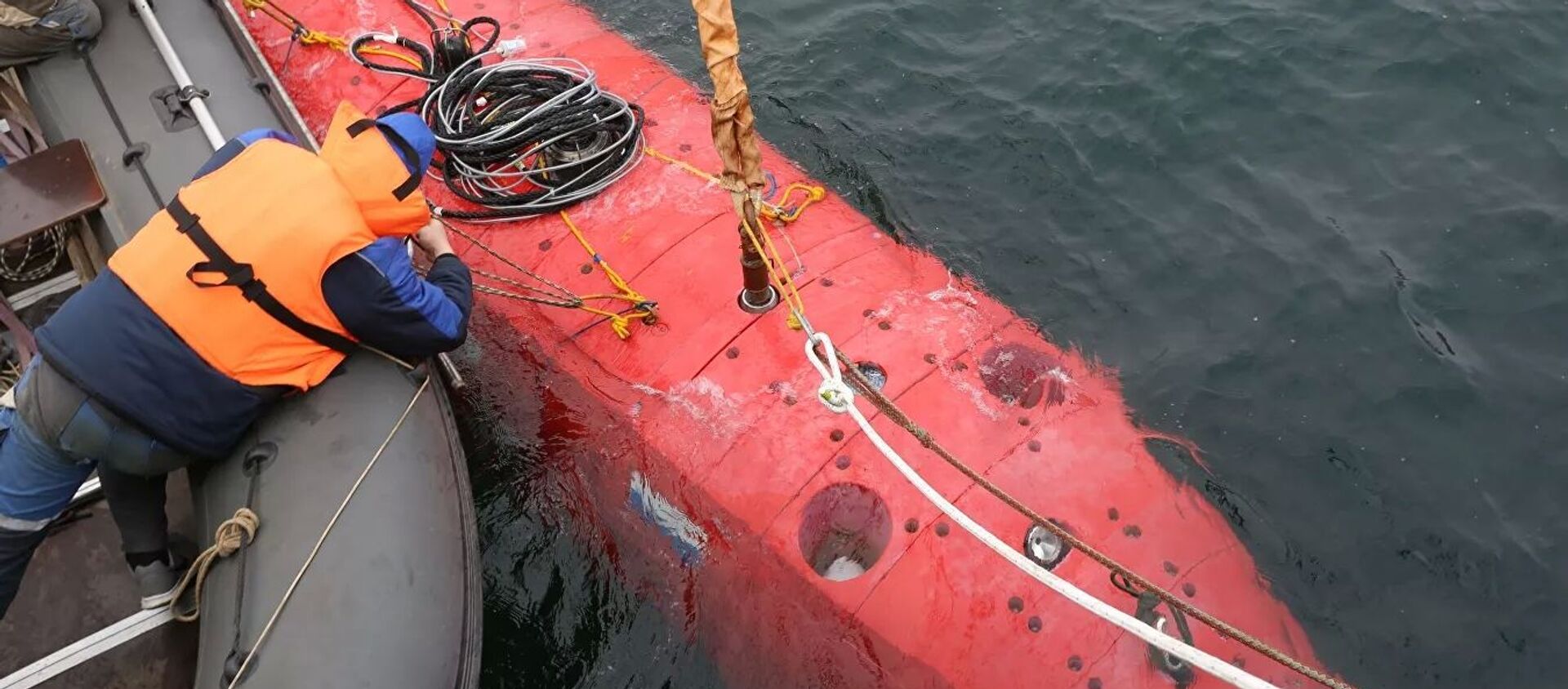Surrogat-V: What We Know About Russia's Stealthy Super-Heavy Sub Imitator
13:14 GMT 18.02.2024 (Updated: 13:34 GMT 18.02.2024)

© Photo : Rubin Design Bureau
Subscribe
Fighting between Russian and NATO-backed Ukrainian forces in the Black Sea and the US campaign against drone-armed Houthis in the Red Sea has shown the growing importance of naval drones in modern warfare. Russian designers have gone a step further, creating a heavy unmanned underwater vehicle that can act as a decoy to fool enemy warships.
Russia’s United Shipbuilding Corporation has teased new details on a promising autonomous underwater drone known as the Surrogat-V (lit. "Surrogate-V"), with the "V" standing for Vedomiy ("Wingman" or "Slave").
“The Surrogat-V will support the operations of manned submarines, primarily in maintaining and restoring stealth. The ‘Wingman’ will take on tasks which would otherwise give away [the manned sub], including communication, the use of active search tools, etc.,” the holding company, owners of the St. Petersburg-based Rubin Design Bureau developing the new unmanned underwater vehicle, said in a press release this week.
The heavy unmanned sub will have a 40 ton displacement, be 17 meters long and have a cruising range of up to 800 nautical miles (200 nautical miles more than when the project was first announced in 2022). The unmanned vehicle is expected to have a cruising speed is 5 knots, and a maximum speed of 24 knots, facilitated by a pump-jet propulsor typically found on larger submarines. The vessel will be powered by lithium ion batteries, but an electrochemical power plant is also reportedly in the works.
The Surrogat-V’s mission will reportedly include searching for naval mines, conducting reconnaissance in ice-covered waters, and carrying out other missions which are dangerous or time-consuming to manned vessels, such as terrain mapping.
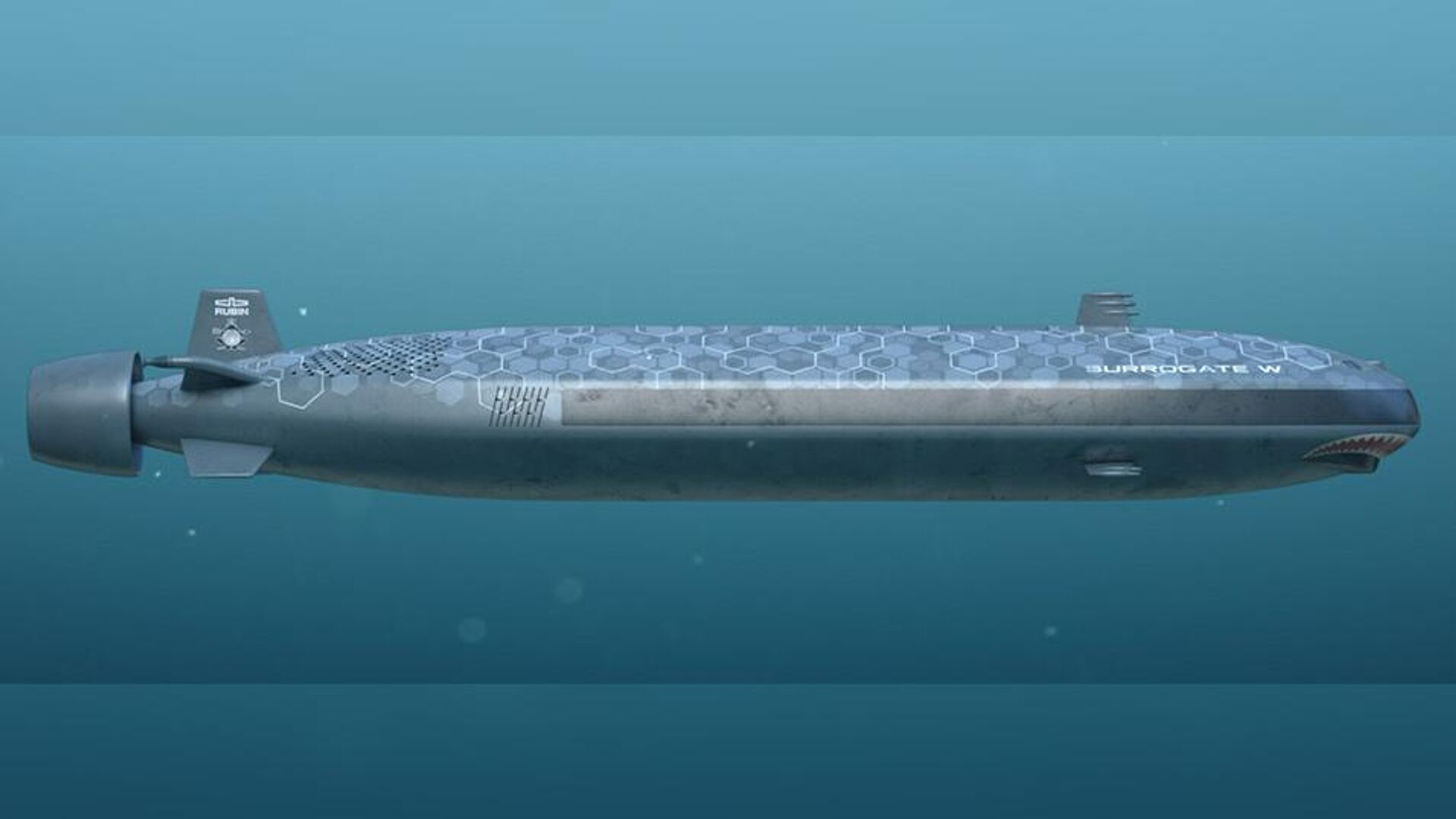
Rendering of Surrogat-V unmanned underwater vessel.
© Photo : Rubin Design Bureau
Media reports indicate that the unmanned underwater vehicles may be fitted with hydroacoustic search equipment, and a unique Russian non-acoustic sub detection system known as SOKS (Russian acronym for "Wake Object Detection System") which can sniff out enemy subs based on any chemicals or radiation left behind in their wake. Models and renders of the system also show a large sonar array onboard, further confirming its capabilities as an intel-collection device.
One of the design’s crucial features is the ability to imitate noises generated by manned nuclear and diesel-electric submarines, allowing the Surrogat-V to fool the enemy, forcing them to pursue the underwater drone instead of a manned sub.

Rendering of Surrogat-V.
© Photo : Rubin Design Bureau
The Surrogat-V was first unveiled at the ARMY-2022 expo, where it was touted as a super-heavy autonomous underwater robot capable of joint operations with Navy submarines. The system’s developers – the Rubin Design Bureau, are the creators of many of Russia and the USSR’s best-known diesel-electric and nuclear submarines, from the Kilo-class, to the Borey SSBN and the massive Typhoon (Akula), as well as an array of naval robots and drones going back to the 1960s.
Additional details on the wingman sub's development prospects, when it is expected to reach production or which submarines it will be carried by when completed have not been publicized. Previous reporting on the Surrogat-V indicates that initial research and development work into the unmanned naval system was completed in 2020, when documentation was transferred to the Defense Ministry for study and evaluation. Rubin confirmed further development of the project in the fall of 2021.
Russian defense observers believe the new development could prove useful in the ongoing special military operation in Ukraine if fielded in a timely manner, particularly as NATO continues to ramp up the supply of deadly new sea mines and drones in the Black Sea for use against Russian warships.
Experts also don’t rule out systems like the Surrogat-V being equipped with weaponry for strike missions. Russian naval historian Dmitry Zhavoronkov told Russian media the latter could include small onboard kamikaze drones used to destroy enemy mines.
Systems like the Surrogat-V are the future of modern warfare, Zhavoronkov said. “Let’s hope that these concepts will soon be turned into finished products, into hardware. We’re living a time of war, and industry must correspond to these realities. The time it takes for new products to reach their theaters of operations must be reduced.”
What Other Underwater Drone Systems is Russia Developing?
The Surrogat-V is the latest offering in the Surrogat series of prospective drones, with previous variants of the system, whose existence began to be reported on in 2019, pitched as training aides and decoys for use against acoustic detection systems used in subs, anti-submarine warfare warships, aircraft and helicopters.
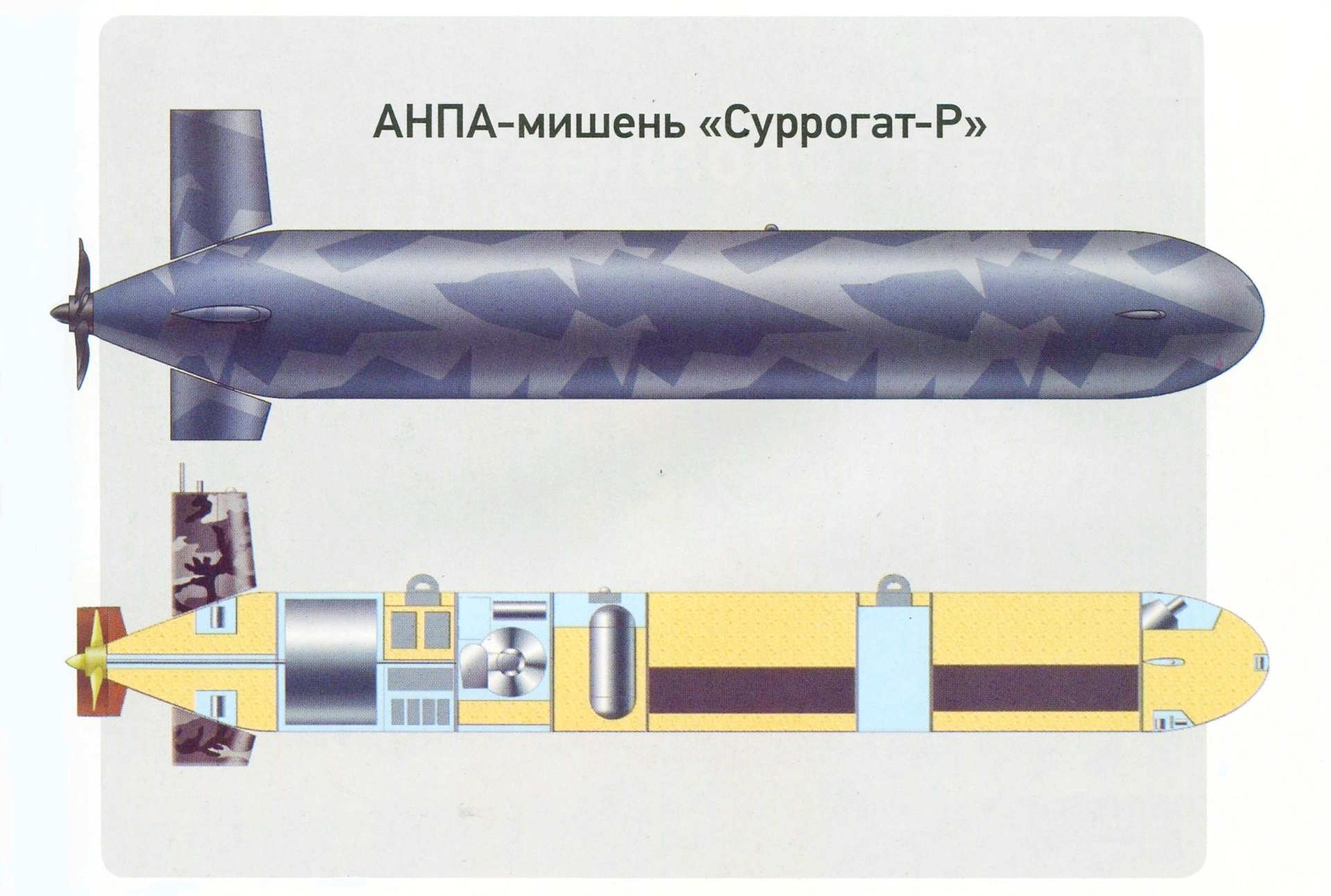
Surrogat-R, an simpler target UUV design by Rubin.
© Photo : Rubin Design Bureau
Developers has also created a number of other unmanned submersible systems, building the Vityaz-D – the world’s first full-ocean depth, fully autonomous deep submergence vehicle, in 2019.
The sub dove down into the Mariana Trench, the deepest oceanic trench on Earth, in May 2020, returning safely and successfully communicating with the surface throughout its 10,000+ meter descent.
Russia has a wealth of experience with unmanned underwater vehicles comparable only to the United States, with Soviet engineers tinkering with remotely-controlled robots and submarine-shaped unmanned vehicles for use in dangerous deep-sea work, exploration and search and rescue operations going back to the 1960s. The earliest Soviet underwater robots included the Manta, the Skat-Geo, the Max-2, the Lortodromiya, the Tiflonus and the MT-88, with the systems used for both military and civilian purposes, such as reconnaissance and the examination of sunken vessels following accidents.
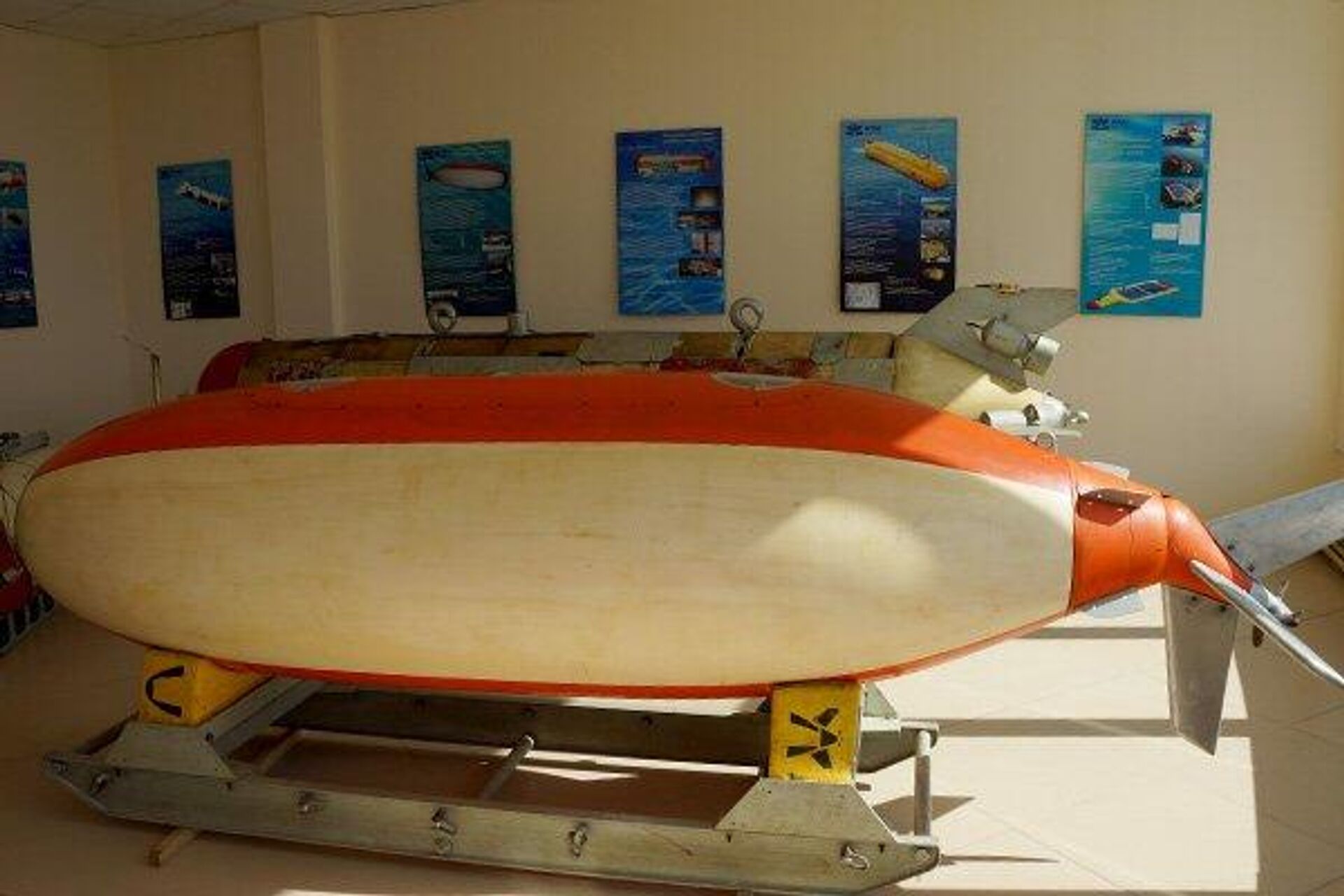
The Tiflonus, one of the earliest Soviet unmanned underwater vehicle designs, created to explore the Arctic depths.
© Photo : Sergei Ptichkin, Rossiyskaya Gazeta
Modern Russia’s first foray into the creation of large uninhabited underwater vehicles began in the mid-2000s with the Klavesin (lit. "Harpsichord"), a large unmanned vehicle, which until the advent of the Surrogat-V constituted one of the “largest and most advanced UUV programs in Russia,” in Western OSI analysts’ estimation.
The Klavesin, also designed by Rubin, is designed to autonomously travel distances up to 300 km at depths up to 6,000 meters. It is equipped with a side-scan sonar, electromagnetic finder equipment, cameras and other sensors. The Navy purchased several of these systems for use aboard the Borey, with the drone used to improve the nuclear subs’ intelligence, surveillance and reconnaissance capabilities, and possibly also being used as perimeter defense in the Arctic region. The latest model of the Klavesin, reportedly weighs 3.7 tons, is 6.5 meters long, and can cruise up to 50 km from its mother ship.
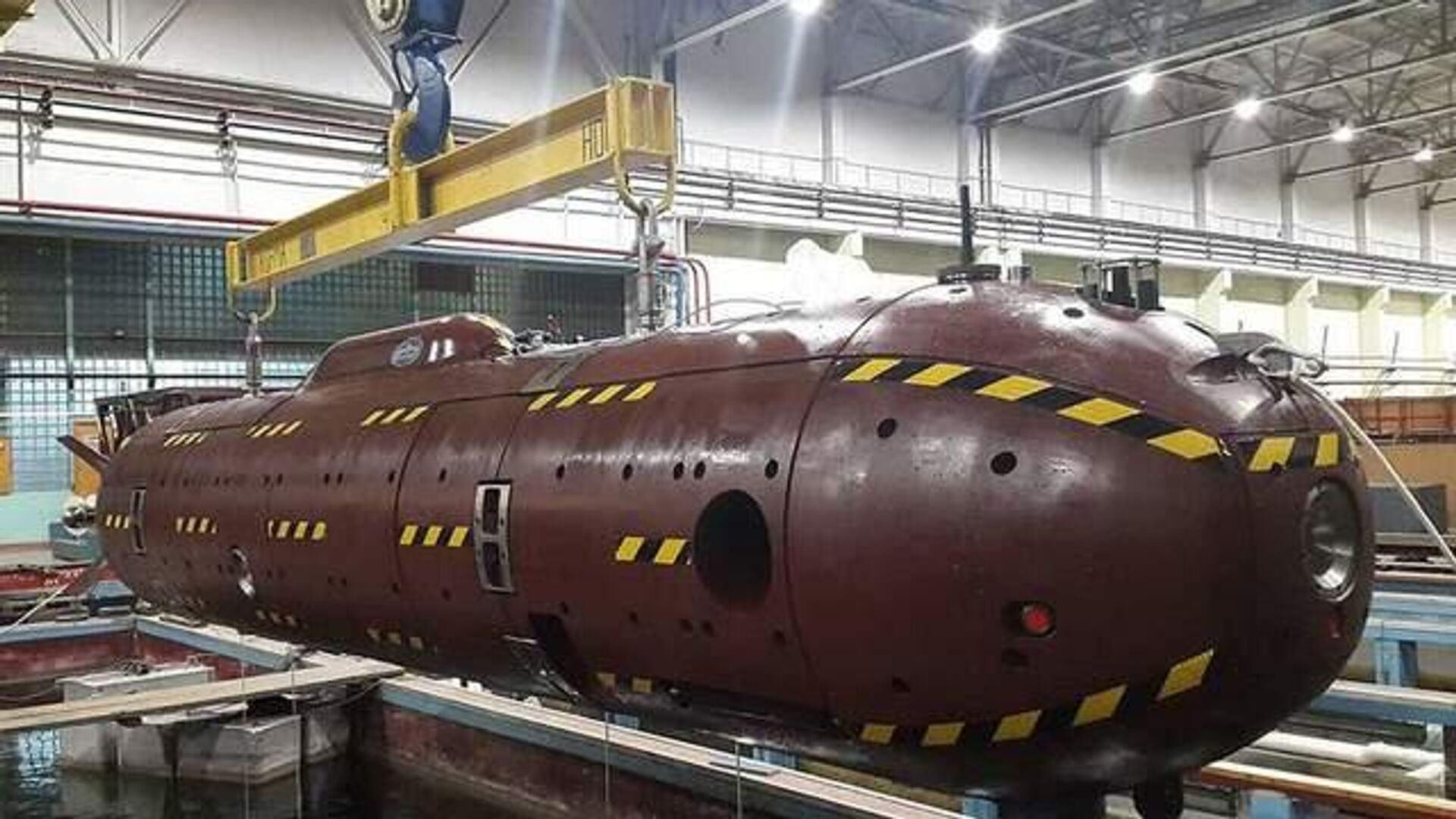
Klavesin-2R-PM unmanned underwater vehicle.
© Photo : Rubin Design Bureau

